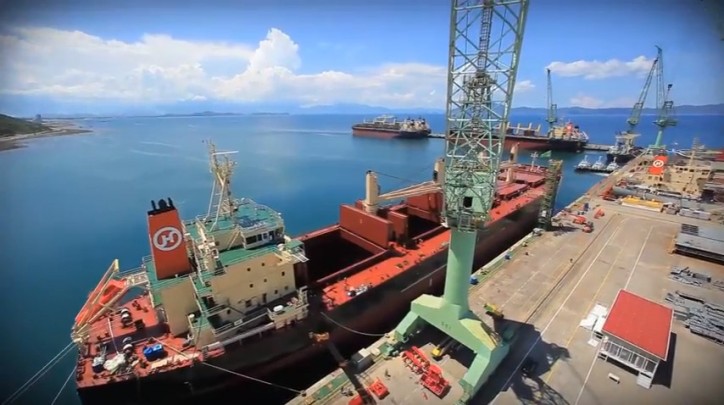Hyundai Mipo Dockyard (HMD) has signed a contract to build a 50,000 dwt bulk carrier with ILSHIN LOGISTICS. The project is a collaboration between POSCO and ILSHIN LOGISTICS to develop the first in a new generation of ships for greener shipping.

Image for representative purposes only
The ship represents a significant step-up for the industry as it is the largest bulk carrier ever ordered to use LNG as fuel. When delivered in the fourth quarter of 2017, the ship will transport limestone cargoes in the Korean coastal trade for steelmaker POSCO. Lloyd’s Register (LR) and the Korean Register (KR) will provide dual classification and certification, verifying compliance with the International Gas Fuel (IGF) Code.
The new type of cryogenic steel, developed by POSCO, is high in manganese and will be used for the 500 m3 capacity Type ‘C’ LNG fuel tank, located on the aft mooring deck. The properties and characteristics of the high-manganese steel, as well as the required welding technology, have been proven suitable for cryogenic applications.
Chang-hyun Yoon, EVP of HMD Initial Planning Division explained: “We should not hesitate to adopt new technologies and materials as we strive for a greener shipbuilding and shipping industry. The world’s first application of high-manganese steel for an LNG storage tank is a challenge but I believe that the material expertise of POSCO and the engineering capability of HMD will offer the right solution to the shipowner. Additionally, the technology evolution represented by this project paves the way for small-scale LNG carrier designs incorporating high-manganese steel Type ‘C’ cargo tanks at a competitive price.”
POSCO has already received the approval for high-manganese steel and its welding consumables from LR and other classification societies. This steel is cost competitive against conventional high-nickel equivalents and can be expected to help reduce capital costs in LNG-fuelled and LNG carrier systems.
Jin-Tae Lee, LR’s Korea Chief Representative & Marine Manager, emphasised the importance of technical co-operation with other stakeholders, and said: “The successful construction of this vessel will be a very good trigger to draw the LNG industry’s attention to the widespread adoption of high-manganese steel in marine applications, for those who are hesitant to adopt LNG-fuelled systems due to high CAPEX. This contract is evidence that shipping can make progress to address cost challenges as well as provide technical solutions in tough markets – and doing so without compromising both safety and performance.”
Source: Lloyd’s Register